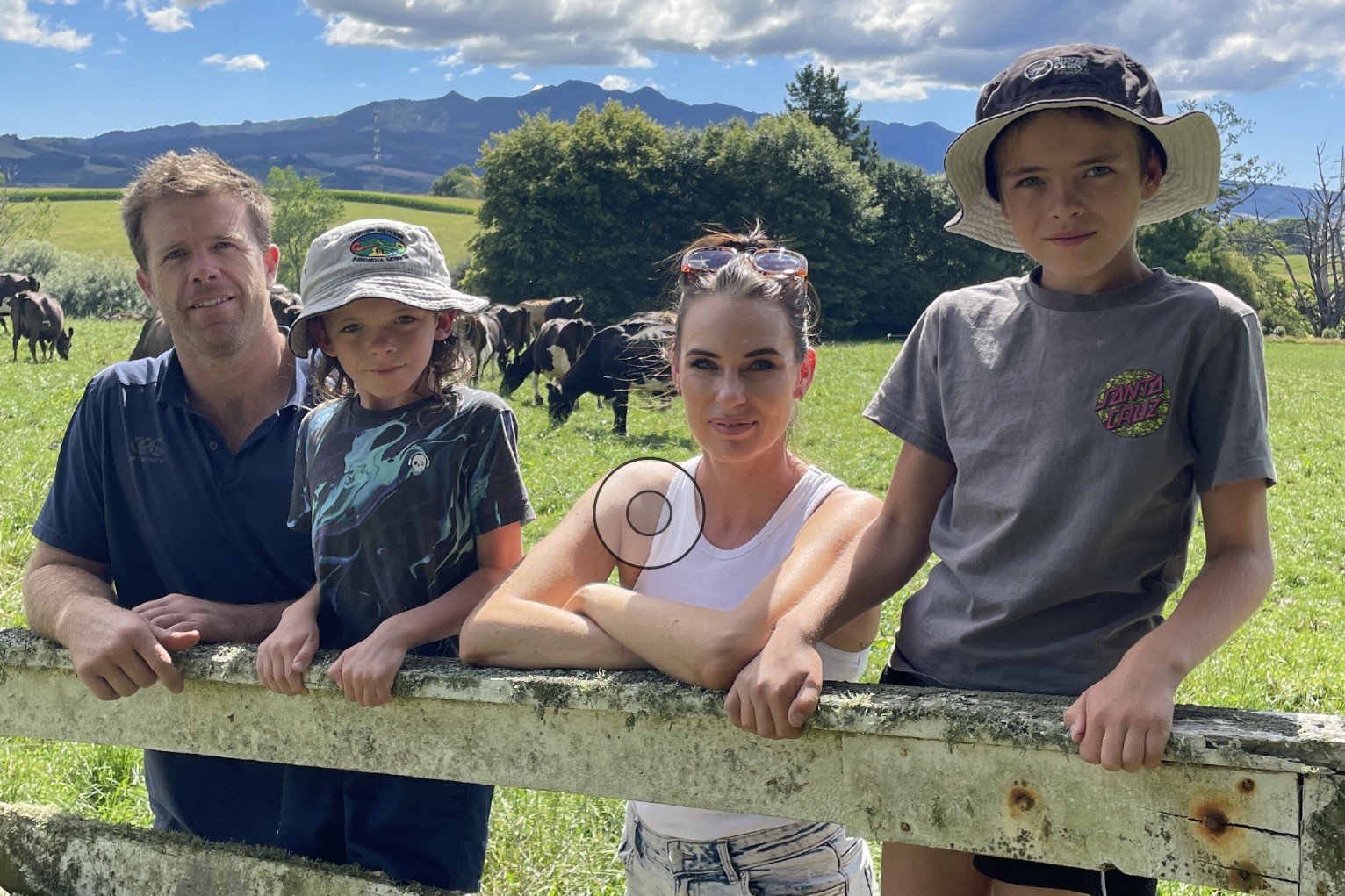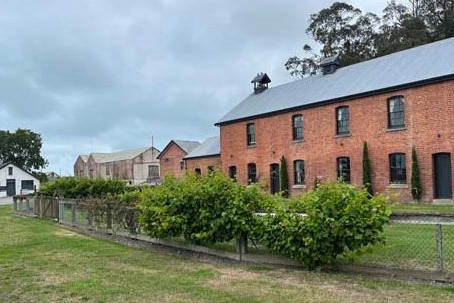Southland farmers and sector bodies are bringing science, good management practices and cross-sector engagement together to protect the health of land, waterways and stock during winter periods. Karen Trebilcock reports.
Southland dairy farmers and winter graziers will be using good practices to stop losses to waterways, retain soil structure and look after the health of their cows this winter.
The combined message from the regional council Environment Southland, DairyNZ and Beef + Lamb plus other farming groups is for farmers to use portable water troughs, back fence, graze from the top down on slopes and keep buffer zones of at least five metres between the crop and drainage areas (also known as critical source areas).
DairyNZ Southland/South Otago regional leader Richard Kyte says southern farmers have taken ownership of the issues and are using available knowledge and resources to improve their farming practices.
AgResearch scientists showed at Telford near Balclutha during three winters between 2011 and 2014 that between 80% to 90% of sediment and nutrient loss from grazing winter crops could be stopped if cows were grazed down a slope with buffers in place instead of the conventional from the bottom up to the top.
The Pastoral 21 research showed yetto-be eaten crop acted as a buffer zone for drainage areas (critical source areas), preventing sediment flowing down slopes into waterways.
As well, the plants took up some of the nutrients.
Leaving an uneaten grass strip between the crop and the drainage area allowed the last of the crop to be grazed while also keeping the waterway clear. Richard says using portable water troughs, instead of fixed permanent troughs, makes back fencing possible which also helps retain soil structure.
“Cows are not continuously walking between the crop face and the trough at the other end of the paddock so they’re not causing so much mud.
“It’s good for cow health because they’re not using all their energy to walk through the mud plus it means there are dry areas where they can lie down. The whole area is not churned up.”
Spacing balage on crop in the summer or autumn, when the ground was still dry, stopped tractor ruts forming which also damaged soil structure and let nutrients flow from paddocks after heavy rain in winter.
Beef + Lamb Southern South Island extension manager Olivia Ross says locally organised, farmer-led catchment groups such as the Aparima Community Environment (ACE) project in Southland are helping to spread the word about good practice.
“These catchment groups are very proactive and more and more farmers are getting involved with them,” she says.
“There are real challenges with wintering in Southland as most farmers down here know. It’s very different actually experiencing it compared with reading about it on paper.
“Which was why ACE invited the Minister for the Environment David Parker to visit last year.”
She compares good management practices to putting on a seatbelt when getting in a car.
“When seatbelts were first introduced there was resistance to wearing them but now no one thinks twice about putting on a seatbelt. It will be the same with wintering.
“In time it will become just what we do, this is how we do it.
“And everyone is supporting everyone in this – regional council, DairyNZ, Beef + Lamb, all of the catchment groups.
“We’re all saying the same thing, we all have the same message to farmers. It’s why Southland works so well. We all do it together. We all do it the best we can.”
Environment Southland principal land sustainability officer Nathan Cruickshank encourages farmers to identify and put in place good management practices appropriate for the paddock, soils and slope.
“We haven’t had anyone apply for consent yet and this winter will be more about education and compliance than taking further measures,” he says.
“Most farmers see the benefits of good practices, not only for their stock but also for their farms. Who wants to lose top soil into a waterway? The Telford Pastoral 21 study was just gold for all of us.
“It showed simply by leaving buffer zones and grazing down slopes instead of up them it stopped almost all of the runoff.”
Richard says it is important for farmers to make sure staff are on board and understand why back fencing and using portable troughs is important.
“They also need to make sure they have plans for when the weather gets really bad such as shelter for their stock and standoff areas.”
Gore winter grazier Andrew Currie remembers what wintering was like only 10 years ago.
“We used to have the cattle in the gullies in the waterways and never thought anything of it.
“Now we have many of those gullies fenced off and planted in trees or we keep large buffer zones of ungrazed grass between the crop and the gullies.”
He and his wife Sarah have farmed their 630 hectares near Gore since 2002, this year wintering 700 cows for three dairy farmers plus running 2800 ewes, 700 hoggets and 170 R1 Hereford cross beef cattle.
Wintering dairy cattle for clients on either fodder beet or swedes allows them to renovate older pastures on the farm economically.
By back fencing and using portable water troughs he’s found soils are less damaged and paddocks can be regrassed up to a month earlier than before.
“Which is grass we need to finish our lambs so we need it as early as possible,” Andrew says.
“We’ve found if we give those soils a hiding during the winter, by making cows walk between the crop face and the permanent trough, by not back fencing, then it can take a long time before we can get a tractor on them.
“The mud is just too deep. It’s like pea soup.”
Andrew is planning to graze some of his fodder beet paddocks across the slope this winter instead of from the top down for ease of management.
“Otherwise the fences are just too long – it’s a narrow strip so they would be 300 metres we’d be shifting.
“When we figured this out when we planted the crop, we made sure we left a large area of ungrazed grass between the crop and the gully. There’s never any water flowing in that gully but I don’t want anything coming off the crop into there.”
He says there are problems with grazing top down with some crop, especially swedes, rolling down the hill.
“But it’s just something you put up with. All you do is pick them up and toss them back. It’s better than losing top soil.”
In February the fodder beet on the farm looked good and the paddock of Cleancrop Hawkestone swedes, planted with the same drill as the fodder beet, made Andrew smile.
“By winter the swedes should be at 18 tonnes to 20 tonnes drymatter (DM)/ha. Drilling it seems to give the bulbs space to grow, instead of broadcasting the seed.”
The next job is placing the balage on the crop.
“It has to be done but it means I don’t then have to start the tractor up in the winter so it’s all good.”
NEW SOUTHLAND RULES
From May 1 in Southland, wintering is a permitted activity (does not require consent) if you have completed a Farm Environmental Management Plan (FEMP) that meets appendix N of the proposed Southland Water and Land Plan, 15% or less of your landholding (up to a maximum of 100ha) is used for winter crops and winter grazing good management practices are used which include:
- If cattle or deer are being grazed the mob size being grazed is no more than 120 cattle or 250 deer
- Stock are grazed on slopes from top to bottom (or a 20m buffer is left to be grazed last at the bottom of the slope)
- Stock are back-fenced
- Transportable water troughs are used
- Supplementary feed is fed in portable feeders
- Critical source areas (including swales) are grazed last
- A vegetated buffer strip of at least five metres is maintained from the outer edge of waterbodies or waterway.
For the full details see Rule 20 in the proposed Southland Water and Land plan, which has legal effect now. If you cannot meet all the criteria, you will need to apply for resource consent.
Processing times for consents vary depending on the details of your proposal.
Farmers with intensive winter grazing will require a FEMP by May 2019, and others by May 2020, if they are changing their scale, scope or intensity of the operation. If there is no change then they will be protected by section 20A continuation rights until six months after the Southland Water and Land Plan has become operative.
You can undertake cultivation on your land without consent if you keep your cultivation:
- Below 800m above sea level
- Below 20 degrees in slope
- At least 5m back from a waterway or wetland
Combined catchment support
The Aparima Community Environment (ACE) project was started last year by six farmer-led catchment groups connected to the Aparima River, which flows from near Mossburn in northern Southland to Riverton where it enters Foveaux Strait.
The catchment groups (Pourakino, Lower Aparima, Orepuki, Mid Aparima, Upper Aparima and Waimatuku) have been running for several years but last year decided to combine to meet the environmental challenges in the area.
More than 600 farms are in the catchment, with about a quarter of them dairy. The rest are sheep and beef, deer and forestry with some conservation land.
Most farms have multiple physiographic zones, soil types and flat to rolling and steep land with variable rain falls.
ACE aims to build and support the resilience of the Aparima community and environment. The project is supported by good management practices and has DairyNZ, Beef + Lamb, regional council Environment Southland, local iwi and other agencies involved.
Minister for the Environment David Parker was invited to the catchment in September to look at the challenges faced in the area as well as what has been achieved so far.
Government is reviewing freshwater regulations which may mean changes to wintering. An announcement is expected in April which will be followed by a consultation period.
DairyNZ is providing recommendations to government to ensure any changes are practical for farmers to implement and economically viable. Meanwhile ACE, with its stakeholders, is monitoring farmer engagement and change of on farm practices as well as doing water quality tests in the catchment.
Although it acknowledges attributing any improvements in water quality to changes happening on farm is difficult, the good practices recommended have been proven to reduce contaminant loss.





